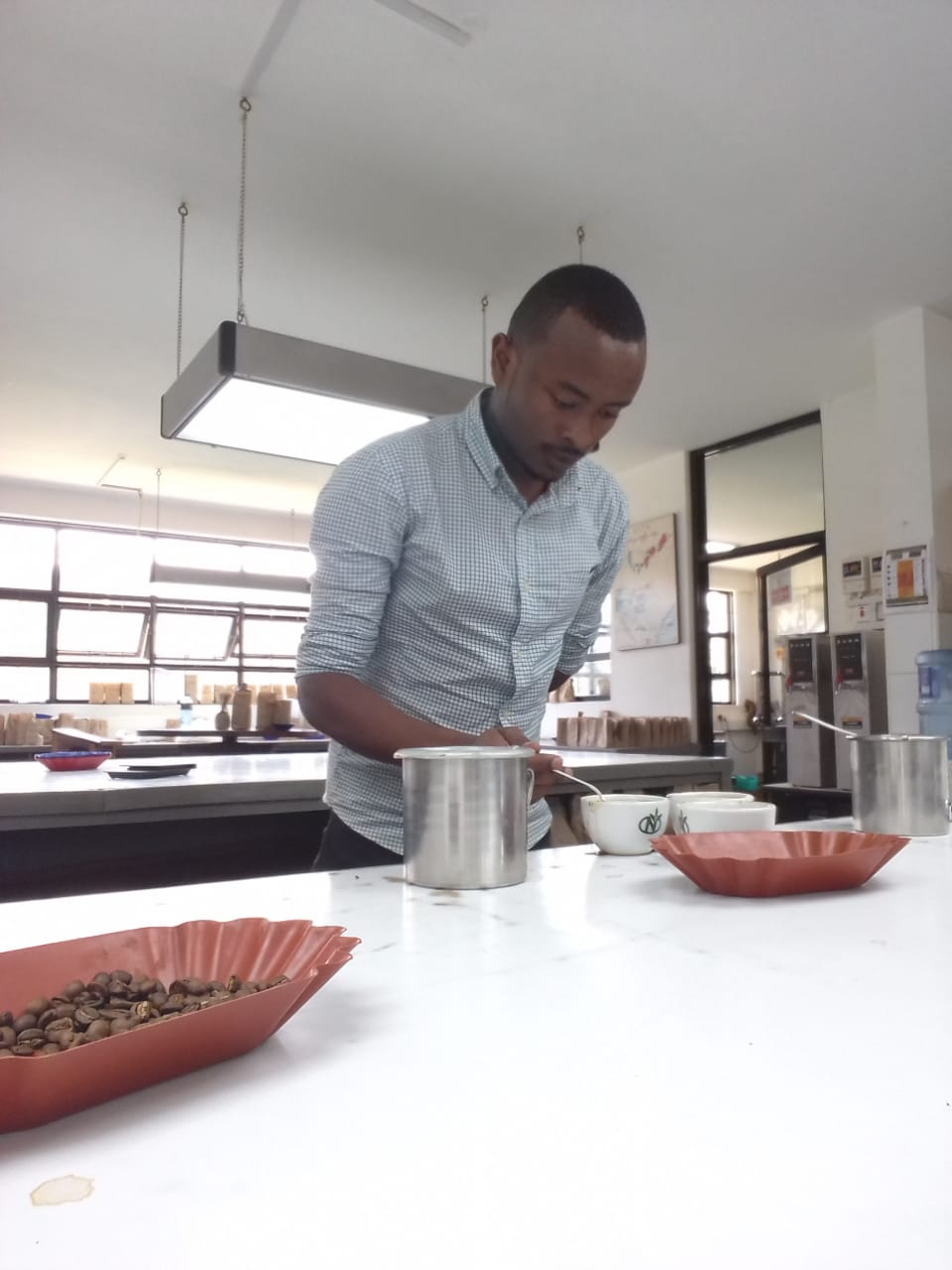Resolving environmental issues in coffee production
Coffee is one of the most traded commodities in the world, which means it is produced and exported on a mass global scale.
Naturally, large-scale agricultural production can sometimes be at odds with environmental conservation and protection efforts – often because of links to deforestation and poor farm management, for instance.
However, as the demand for sustainably-grown coffee continues to rise, more and more efforts are being made by industry stakeholders to support farmers to reduce the environmental impact of coffee production.
What’s more, as the impact of climate change continues to threaten the future of the coffee sector, these sustainable efforts are now more important than ever.
To find out how we can acknowledge and begin to resolve environmental issues in coffee production, I spoke with three industry experts. Read on for more of their insight.
You may also like our article environmentally sustainable coffee production & profitability.
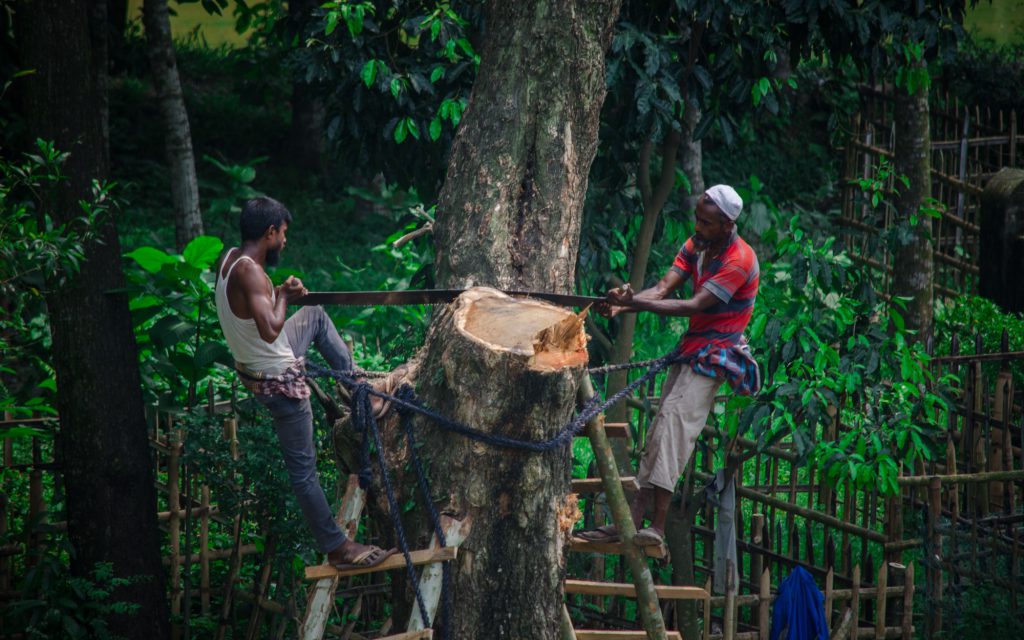
Understanding the environmental issues associated with coffee production
First and foremost, it should be noted that the vast majority of environmental issues in coffee production are a result of large-scale farming.
Although it’s estimated that smallholder farmers produce up to 80% of the world’s coffee supply, most of them only grow coffee on 30ha or less – meaning their carbon footprints are minimal compared to larger coffee farms and multinational coffee companies.
Ultimately, this means accounting for environmental issues is largely the responsibility of these companies – not producers.
However, while there is a growing number of sustainable programmes being implemented on coffee farms, that doesn’t mean there aren’t some environmental issues stemming from coffee production.
Steffen Sauer is the founder of Ulinzi Africa Foundation, a non-profit that works with park rangers in East Africa to protect local wildlife.
“Conservation and environmental protection are problems in the coffee industry, but they are not unique to this sector,” he explains. “These are issues in all major, large-scale agricultural industries because of economies of scale.”
A 2021 study from University College London found that after the export of coffee, production was responsible for the second-highest total volume of carbon emissions across the supply chain. This is because in many cases the transport of coffee is reliant on fossil fuels to some extent, as coffee is generally shipped to consuming countries on large freight vessels.
However, beyond emissions, we also have to consider other environmental issues. For instance, the incorrect use of chemicals and agricultural inputs on larger farms can be an environmental concern. If applied incorrectly, chemicals such as fertilisers and pesticides can cause serious damage to the environment and surrounding wildlife.
Overuse of these chemicals on a large scale can lead to a decline in soil health, as well as groundwater contamination and eutrophication. This is when bodies of water become overly saturated with nutrients and minerals, particularly nitrogen and phosphorus. Ultimately, this can kill animals, insects, fish, and birds.
Deforestation is also another problem for large-scale agriculture, as it leads to a significant loss of habitat for local wildlife and can accelerate the desertification of arable land.
“Conservation is not just about protecting animals, but also their habitats,” Steffen adds. “There are a lot of synergies between conservation and coffee; the two are interlinked.”
Around the world – including in major coffee-growing regions – an estimated average of 13 million hectares of forest are lost per year. Not only does this destroy habitats for animals, insects, and birds, it also means there are fewer trees to sequester carbon.
This is especially concerning, as experts are already predicting that if carbon emissions remain as they are now, by 2050 as much as half of all global arabica-growing land could be unsuitable.
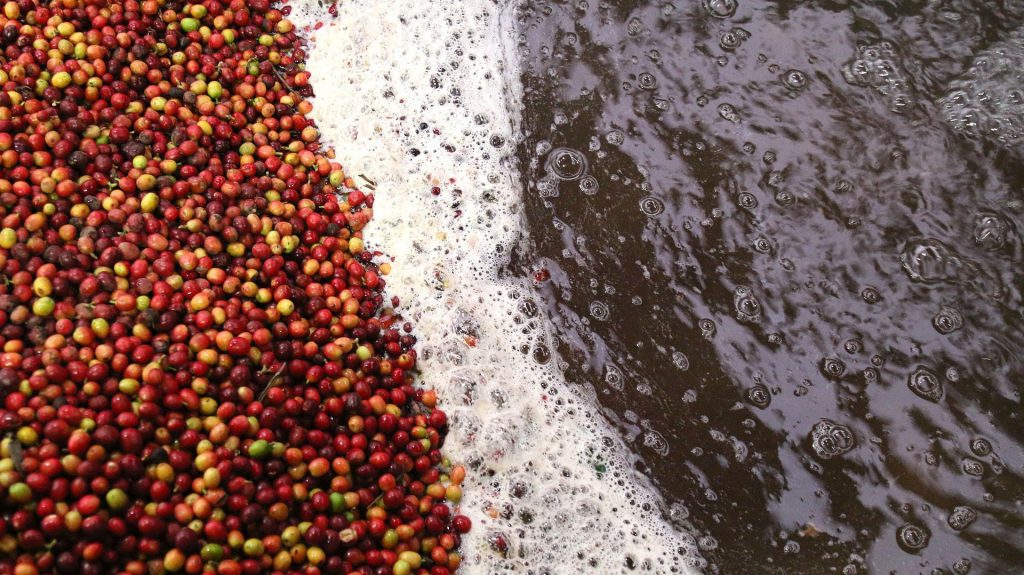
What about coffee processing?
Processing is a key part of preparing coffee for export, as well as preserving quality. The two main methods are washed and natural processing.
Ritesh Doshi is the CEO of Spring Valley Coffee in Kenya. He explains the differences between the two in terms of environmental issues.
“Washed coffee can be easier to sell in my experience, but wet processing uses [significantly more water than natural processing],” he says. “Natural processing, however, results in almost no wastewater.”
Again, it’s important to note that in comparison with large-scale agriculture, smallholder farmers are responsible for significantly lower amount of harmful byproducts and a tiny volume of wastewater, if any.
Natural processing is arguably the most environmentally-friendly processing technique, as it is less energy-intensive and requires little to no water. This is because the cherries are harvested and then left to dry fully intact on patios or raised beds.
Washed coffee, meanwhile, needs a significant volume of water – which can make it a less sustainable processing method. The cherries are submerged in water tanks before they are depulped (or wet milled), which involves removing the seeds from the skin and fruit of the cherry.
Although washed processing can result in a cleaner-tasting coffee, it also produces larger volumes of wastewater than natural processing. However, even if a smallholder producer is exclusively carrying out washed processing, they alone are unlikely to cause a significant amount of harm to the environment.
Jesse Winters is the founder of Conservation Coffee, which sources shade-grown coffee from organic farms.
“[If the wastewater is not managed correctly], it can pollute rivers, streams, and lakes which increases the bioload,” he tells me. “This can be devastating to marine [and freshwater] wildlife.”
A high bioload can lead to eutrophication, as mentioned earlier, which in turn causes phytoplankton like algae to grow. This prevents oxygen and sunlight from reaching below the surface of the water – potentially killing fish and other wildlife.
Pulp is another byproduct of coffee processing to consider, no matter which method is used. Much like wastewater, if not discarded improperly, pulp can pollute land and water systems, too.
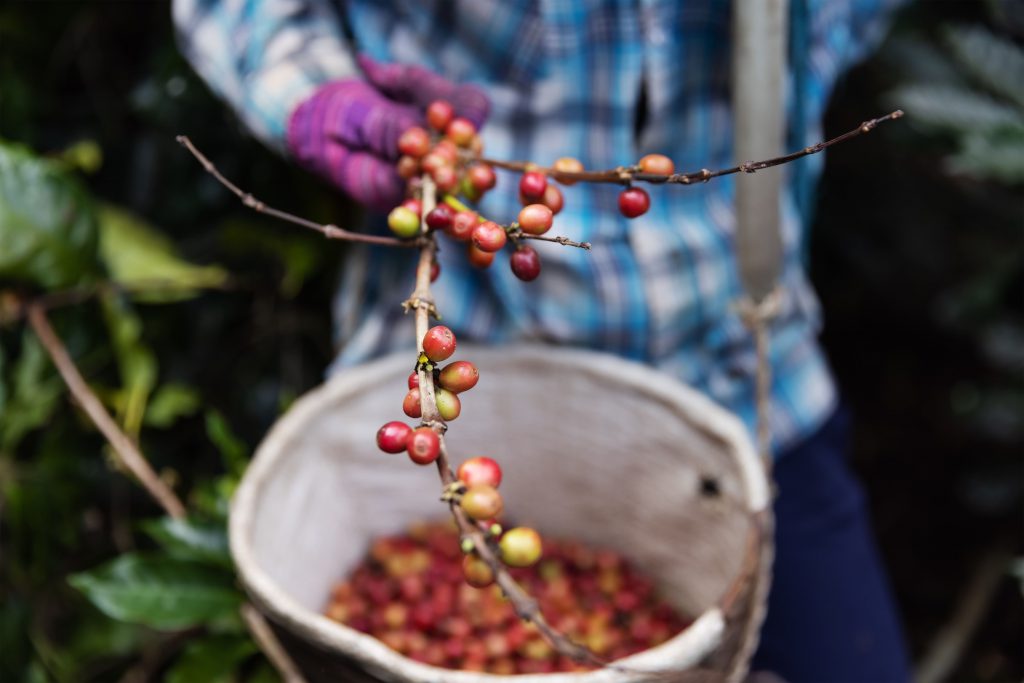
What about the rest of the supply chain?
While coffee farmers can be encouraged to use more organic fertilisers or manage waste in a more sustainable way, environmental efforts in the coffee industry need to go far beyond this.
It goes without saying that all supply chain actors need to take on more responsibility for reducing the environmental impact of the coffee industry.
Firstly, we need to recognise that beyond production and export, there are other areas of the supply chain which are responsible for environmental issues.
Roasting can produce greenhouse gas emissions, such as carbon dioxide and carbon monoxide. While some modern roasters now include built-in air recycling systems, older models typically emit these gases into the atmosphere.
Furthermore, the volume of waste produced by coffee shops (especially single-use cups) is a major concern for many people. It can be anywhere from difficult to impossible to recycle single-use coffee cups, and many are sent to landfill as a result. In these anaerobic conditions, it can take hundreds of years for these cups to break down.
Steffen believes that some of the responsibility to reduce environmental impact lies with consumers.
“Consumers need to demand higher quality, but they also need to be willing to pay for it,” he tells me. “They should pay for the quality they want to have, and they should purchase coffee that does not cause any damage to the environment.
“Individual decisions play a big role,” he adds. “For example, consumers can put pressure on bigger companies to be more mindful of the environment.”
In recent years, many larger coffee companies have pledged to offset their emissions and reduce their environmental impact, including Starbucks and Nespresso. However, it’s evident that more work needs to be done – especially when these companies still make a significant contribution to the amount of waste produced.
Ritesh agrees, saying: “We need people in the bigger companies adding more value – farmers also need to add pressure to these companies.”
Other key industry stakeholders also need to play a part, as legislation and policies can help to bolster conservation efforts in coffee production. For instance, the European Union recently enforced new mandatory due diligence rules on exporters and traders so they will gradually stop sourcing coffee which is linked to deforestation at origin.
“Government legislation can help, but change ultimately needs to be led by forward-thinking businesses and consumers,” Ritesh says.
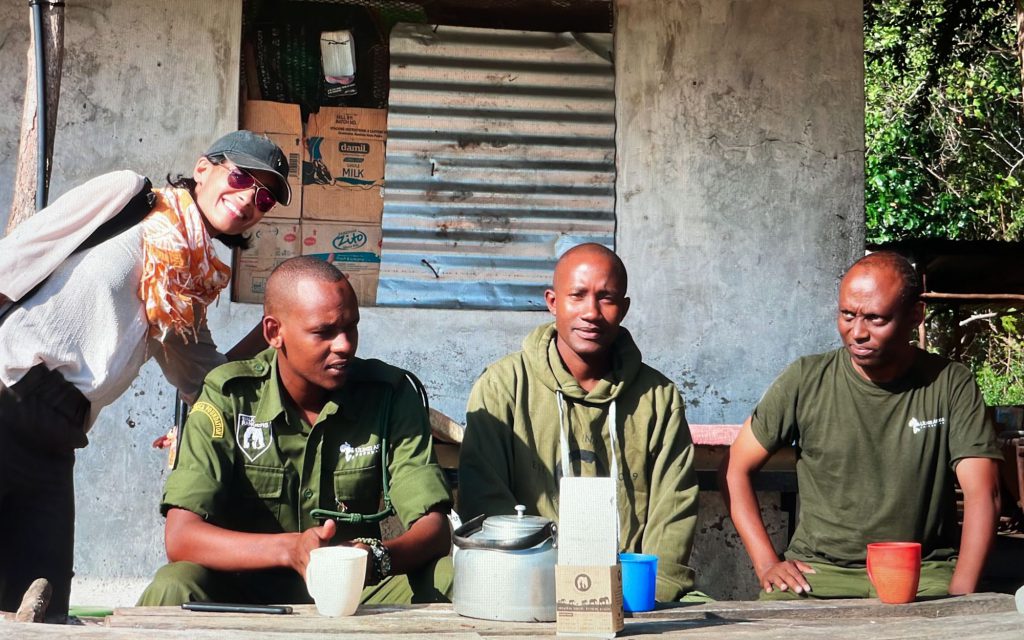
Considering the solutions
In order to implement more environmental protection efforts at origin, we must acknowledge that actors all across the supply chain have a responsibility to support sustainability initiatives in coffee-producing countries.
Some farmers are shifting towards more environmentally-friendly agricultural practices, such as syntropic farming and agroforestry.
Growing coffee under shade trees, for instance, is proven to produce higher-quality coffee across the board, while also promoting biodiversity. This can also provide farmers with natural pest control methods, as birds and small animals can eat insects which interfere with coffee plants.
As well as this, increasing the number of shade-grown coffee plants encourages less deforestation, sequesters more carbon dioxide, and generally requires fewer chemical inputs, such as fertilisers.
Ritesh tells me that Spring Valley partners with a conservation programme. He says for every bag of coffee sold, 50% of gross profit is donated to the programme.
“We work with Seedballs Kenya,” he explains. “Using this money, we plant five indigenous tree seedlings in an area that we source from.”
As for processing methods, proper management techniques can help to recycle or reuse wastewater and discarded pulp. When treated correctly, wastewater can be used to irrigate coffee plants or can be added back into natural water sources. Similarly, when managed properly, coffee pulp can be repurposed as biofuel or organic fertiliser.
However, for many producers (mostly smallholder farmers) these changes may require a significant financial investment, and may not immediately pay dividends. For instance, while organic farming can be more sustainable, it may also result in smaller yields, meaning producers might not receive as much income.
Larger coffee companies also have a major role to play in reducing environmental impact. Among some of these, we’re seeing concepts like carbon offsetting and insetting become more prominent across coffee production.
Insetting is the process of organisations reducing net carbon emissions within their own supply chains, while offsetting is when they acquire carbon credits to balance their emissions, often looking beyond their suppliers or even to other sectors to do so.
Furthermore, while environmental sustainability at farm level is certainly necessary, it’s important to highlight the role of certifications, too.
Certification schemes are commonplace in the coffee industry, especially those which require coffee businesses to implement more sustainable practices. For instance, organic certifications have strict regulations for farmers – mainly regarding the absence of chemical inputs.
However, Jesse emphasises that consumers need to pay attention to what certifications actually mean.
“Consumers should purchase coffee from companies who [have passed many checks to receive their certifications],” he says.
Many smallholder producers may already be carrying out organic practices on their coffee farms. However, because obtaining certifications can be costly, some farmers may be unable to apply – meaning they are retaining less value.
Ultimately, Ritesh believes that the push for environmental conservation in coffee production comes down to whether customers are willing to pay more.
“To use compostable bags, or produce shade-grown coffee, or implement organic farming practices costs more money – the end customer needs to be willing to pay for it,” he concludes.
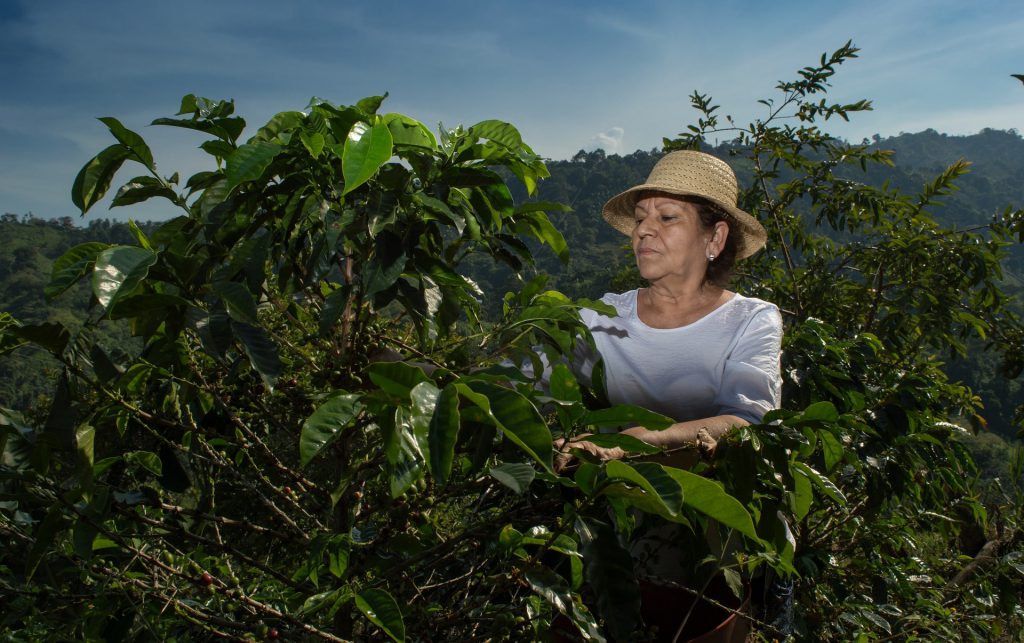
Although sustainable changes have been made in recent years, it’s clear that more legislation, investment, and awareness is required to resolve some of the environmental issues related to coffee production. We also can’t ignore the financial implications of making these changes at farm level – particularly where smallholder farmers are concerned.
Ultimately, there are signs that things will keep improving, but with mounting pressure from the threat of climate change, one thing is arguably clear: the need for more substantive change is certainly increasing.
Enjoyed this? Then try our article on whether coffee quality & environmental sustainability go hand in hand.
Photo credits: Mauhobaah Butt
Perfect Daily Grind
Want to read more articles like this? Sign up for our newsletter!


